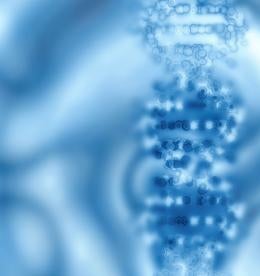In the recent memorandum opinion, the court invalidated claim 1 of U.S. Pat. No. 5,612,179, owned by Genetic Technologies, Ltd., as “impermissibly [claiming] a natural phenomenon.” (Genetic Technologies, Ltd. v. Bristol-Myers Squibb Company, C.A. No. 12-394-LPS (D. Delaware, Oct. 30, 2014), copy of which can be found at the end of this post).
If you have been following the Mayo/Myriad/Intema trail of tears, you could probably write 98% of this opinion “from memory.” A number of aspects of this very lengthy and predictable opinion stand out, however.
The claims were directed to a method of detection of at least one coding region allele of a multi-allelic genetic locus by amplifying genomic DNA via PCR, with a primer pair that spans a non-coding region sequence. The primer pair defines a DNA sequence which is in genetic linkage with the genetic locus and contains a sufficient number of non-coding region sequence nucleotides so that PCR produces an amplified DNA sequence characteristic of said allele; “and analyzing the amplified DNA sequence to detect the allele.” The claim was based on the discovery that there can be a correlation between variations in non-coding introns and coding region alleles; that is, that SNPs in non-coding DNA regions can also be in linkage disequilibrium with SNPs in coding regions of DNA . The genotypes of two SNPS in non-coding regions and two SNPs in a coding region are correlated so that the SNPs in the non-coding region can serve as “surrogate markers’ for the SNPs in the coding region.
GTG first argued that the correlations are not natural phenomena or a law of nature because any given linkage is not universal, and not present in all species. The court, however, had no trouble correlating the facts before it and language in Mayo, finding that both correlations “here exist apart from any human action.” The additional steps in the claim were dismissed as routine and conventional techniques to “manifest the natural law – that is to detect the natural correlations between coding and non-coding sequences.” The court found nothing to limit the claims to an “application of this newly-discerned DNA correlation.”
This conclusion soon disposed of GTG’s best argument – that the claims are unconventional methods because they teach amplifying genomic DNA with a primer pair that spans an intron sequence and defines a DNA sequence in genetic linkage with an allele to be detected, and that “no one had used a primer pair to amplify non-coding DNA to define a DNA sequence in genetic linkage with a coding region allele in order to detect that allele.” In other words, GTG argued that the use of PCR in this way amounted to the elusive “inventive step” found to be absent in Mayo.
The court rejected this argument in one short paragraph, beginning,
“GTG fails to separate the unpatentable natural law from the purportedly unconventional ‘amplifying’ technique. Mayo sets out that when ‘the steps in the claimed process (apart from the natural laws themselves) involve well-understood, routine, conventional activity previously engaged in by researchers in the field,’ the subject matter is ineligible without more.”
But this analysis both impermissibly dissects the claims into its component parts [“Mayo requires that the additional steps be viewed apart from the natural law”] and ignores that fact that the PCR technique used in the GTG claim was NOT conventional activity previously engaged in by researchers in the field!
This is clear from the facts of Mayo, in which the act of measuring the metabolite levels in the blood was an indisputably conventional activity. The court in this case simply would not “compare and contrast” the factual differences between two very different processes. The court gives short shrift to the requirement that the claim be analyzed as a whole, simply concluding that viewing the other claim steps “as ordered combination,” does not render the natural law patent eligible. But isn’t this analysis facially improper as failing to consider the claim as a whole (rather than as a group of steps conducted apart from the natural law). This is close to turning the requirement for an inventive concept into a requirement for a second invention – all in one claim!
The court got off to a faulty doctrinal start just three lines into part C, when it stated: “A correlation that preexists in the human body is an unpatentable phenomenon” citing the “Lab Corp. dissent” by three Supreme Court Justices for the proposition that the “correlation between homocysteine in human body fluid and vitamin deficiency is [a] ‘natural phenomenon’).” This may well be the law, but reliance on this sort of dictum is unnecessary “Bible thumping” – the court is better off sticking with its “activist construction” of Mayo. For sure, if anything about these cases is clear—courts are by now well aware that s.101 is the new “Easy Button” to dispose of these pesky biotech lawsuits even before the Markman hearing.



 i
i


